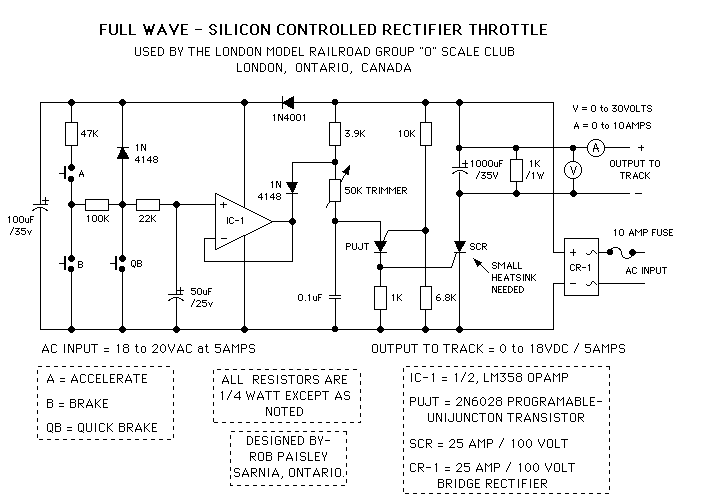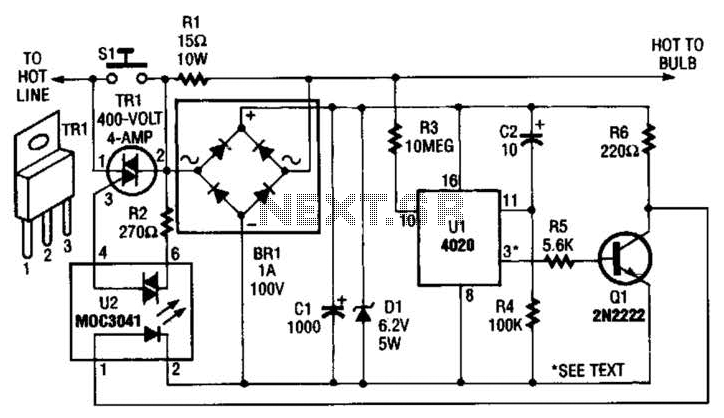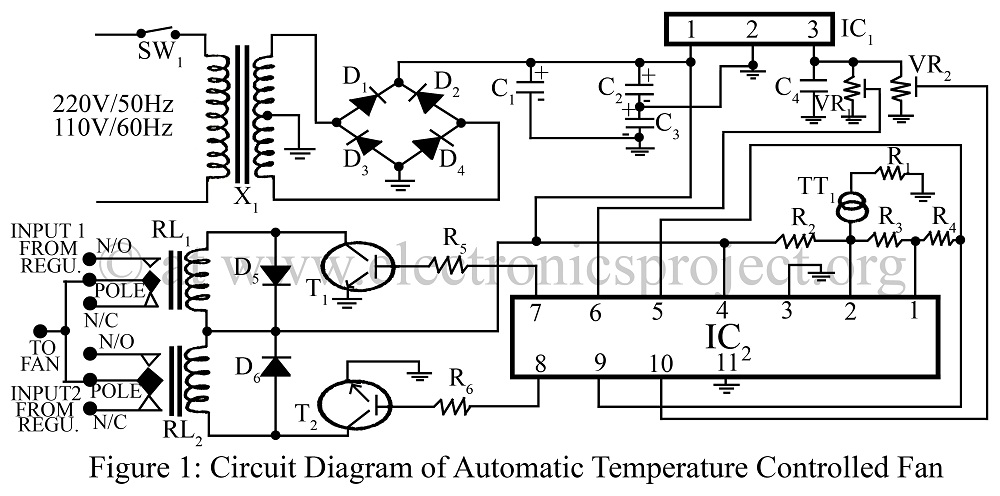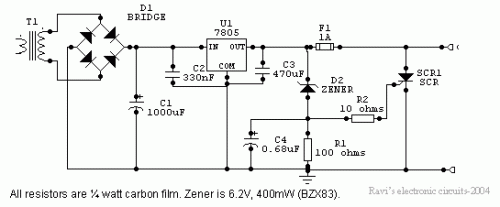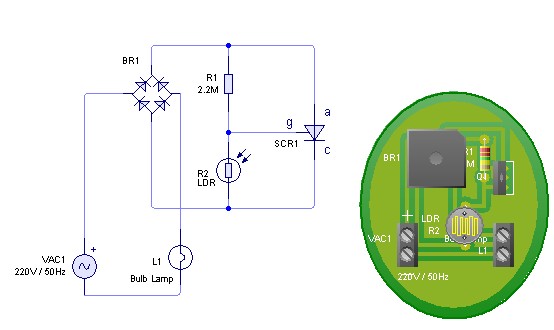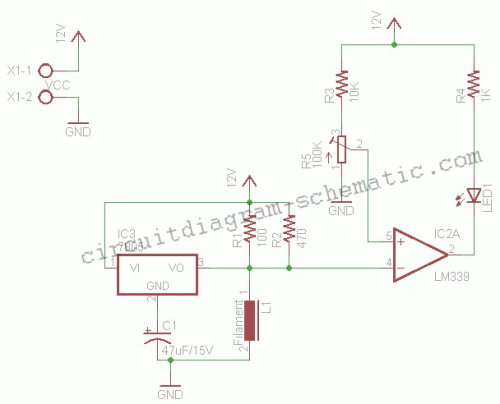
Automatic ttl morse-code keyer
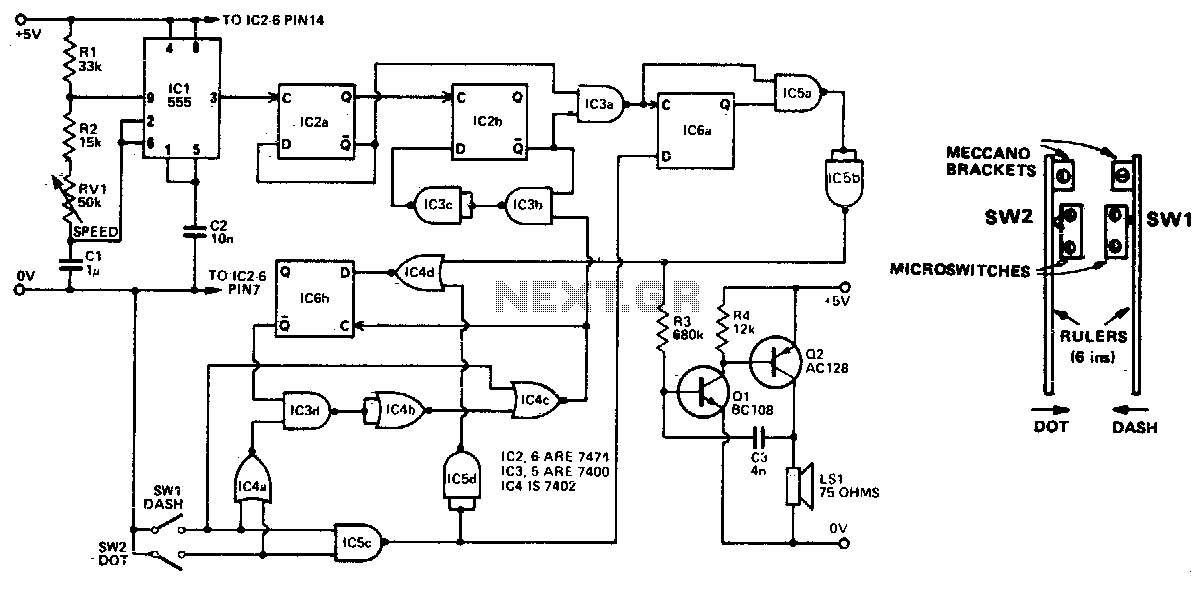
Automatically generated dits and dahs are produced over a speed range of 11 to 39 wpm. The upper limit can be raised by decreasing R2. SW1 and SW2 can be a "homebrew" paddle operated key.
The described circuit is designed to generate Morse code signals, represented as "dits" (short signals) and "dahs" (long signals), at adjustable speeds ranging from 11 to 39 words per minute (wpm). The speed of the generated signals can be modified by adjusting the resistance of resistor R2. By decreasing the resistance value of R2, the circuit can achieve a higher transmission speed, thus allowing for more rapid generation of Morse code.
The keying mechanism is facilitated by two switches, SW1 and SW2, which can be implemented as a homebrew paddle key. This type of key allows the operator to manually control the generation of dits and dahs by pressing one switch for a short signal and another for a long signal. The paddle design provides a user-friendly interface for Morse code transmission, enabling efficient and precise operation.
In a typical schematic, the circuit may include additional components such as capacitors for signal smoothing, diodes for protection against reverse polarity, and possibly a microcontroller to manage timing and signal generation. The output can be connected to an audio oscillator or a radio transmitter, enabling the Morse code signals to be transmitted over radio frequencies or converted to audible tones.
Overall, this circuit presents a versatile solution for generating Morse code, suitable for both hobbyists and professionals interested in amateur radio and communication technologies.Automatically generated dits and dahs are produced over a speed range of 11 to 39 wpm. The upper limit can be raised by decreasing R2 SWl and SW2 can be a "homebrew" paddle operated key. 🔗 External reference
The described circuit is designed to generate Morse code signals, represented as "dits" (short signals) and "dahs" (long signals), at adjustable speeds ranging from 11 to 39 words per minute (wpm). The speed of the generated signals can be modified by adjusting the resistance of resistor R2. By decreasing the resistance value of R2, the circuit can achieve a higher transmission speed, thus allowing for more rapid generation of Morse code.
The keying mechanism is facilitated by two switches, SW1 and SW2, which can be implemented as a homebrew paddle key. This type of key allows the operator to manually control the generation of dits and dahs by pressing one switch for a short signal and another for a long signal. The paddle design provides a user-friendly interface for Morse code transmission, enabling efficient and precise operation.
In a typical schematic, the circuit may include additional components such as capacitors for signal smoothing, diodes for protection against reverse polarity, and possibly a microcontroller to manage timing and signal generation. The output can be connected to an audio oscillator or a radio transmitter, enabling the Morse code signals to be transmitted over radio frequencies or converted to audible tones.
Overall, this circuit presents a versatile solution for generating Morse code, suitable for both hobbyists and professionals interested in amateur radio and communication technologies.Automatically generated dits and dahs are produced over a speed range of 11 to 39 wpm. The upper limit can be raised by decreasing R2 SWl and SW2 can be a "homebrew" paddle operated key. 🔗 External reference
Warning: include(partials/cookie-banner.php): Failed to open stream: Permission denied in /var/www/html/nextgr/view-circuit.php on line 713
Warning: include(): Failed opening 'partials/cookie-banner.php' for inclusion (include_path='.:/usr/share/php') in /var/www/html/nextgr/view-circuit.php on line 713
